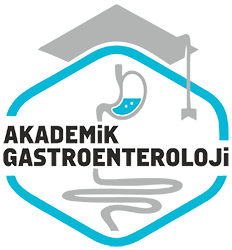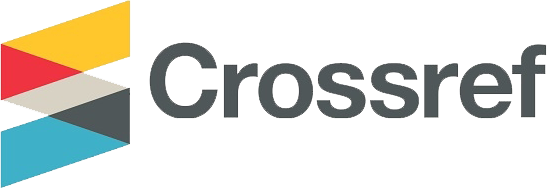Agustos 2023
Intrahepatik kolanjiokarsinomlarin lenf nodu diseksiyon sonuçlari, cerrahi tedavi yöntemleri ve onkolojik sonuçlari, tek merkez deneyimi
Lymph node dissection results, surgical management modalities and oncologic results of intrahepatic cholangiocarcinomas, single center experience
- Ana Sayfa
- Sayılar
- Agustos 2023
- Intrahepatik kolanjiokarsinomlarin lenf nodu diseksiyon sonuçlari, cerrahi tedavi yöntemleri ve onkolojik sonuçlari, tek merkez deneyimi...
Özet
Giriş ve Amaç: Intrahepatik kolanjiokarsinom, bir safra yolu kanseridir. Intrahepatik kolanjiokarsinom için mevcut tek küratif tedavi karaciger rezeksiyonudur. Bu çalışmanın amacı, merkezimizde yapılan intrahepatik kolanjiokarsinomlarin lenf nodu diseksiyonu, cerrahi yönetimi ve nüks oranlarinin sonuçlarını vermektir. Gereç ve Yöntem: Ocak 2019 – Ocak 2023 tarihleri arasında klinigimizde intrahepatik kolanjiokarsinom tedavisi gören Hastaların tibbi kayitlari retrospektif olarak değerlendirildi. Bulgular: Klinigimizde 24 hasta ameliyat edildi. Hastaların 12’si kadın, 12’si erkekti ve yaş ortalaması 52.75 ± 10.20 idi. Ortanca tümör boyutu 8.50 cm idi. Ameliyatta 12 hastaya sag hepatektomi, 6 hastaya sol hepatektomi, 2 hastaya genisletilmis sol hepatektomi, 2 hastaya santral hepatektomi ve 2 hastaya segment 4 arti 5 rezeksiyon uygulandi. Ortalama çikarilan lenf nodu sayisi 9.95 ± 3.56 idi. 5 hastada malign lenf nodu görüldü. Postoperatif ortanca hastanede kalis süresi 13.50 gündü. Postoperatif ilk 3 ayda sadece 2 hastada mortalite gözlendi. Hastaların medyan genel sagkalimi 318.50 gündü. Sonuç: Çalışmamızin sonucunda preoperatif dogru evreleme ile seçilecek intrahepatik kolanjiokarsinom Hastalarında, rezeke edilebilir tümörü olan Hastaların komorbiditeleri ve durumlari değerlendirilerek agresif cerrahi, cerrahi sırasında hepatoduodenal lenf nodlarinin çikarilmasi ve hastalarda karaciger hacim genisletme islemleri Remnant karaciger hacim yetmezligi gelisebilecek hastalarda, küratif tek sans olan Hastaların rezeksiyona zorlanmasinin gerekli olduğu gösterilmıştır.
Abstract
Background and Aims: Intrahepatic cholangiocarcinoma is a cancer of the biliary tract. The only current curative treatment for intrahepatic cholangiocarcinoma is liver resection. The aim of this study is given the result of the lymph node dissection, surgical management and recurrens ratio of intrahepatic cholangiocarcinomas in our center. Material and Methods: The medical record of patients who were treated for intrahepatic cholangiocarcinoma in our clinic were retrospectively evaluated between January 2019 to January 2023. Results: Twenty four patients were operated in our clinic. Of the patients, 12 were female, 12 were male, and the mean age was 52.75 ± 10.20 years. The median tumor size was 8.50 cm. Twelve patients had right hepatectomy, 6 patients had left hepatectomy, 2 patients had extended left hepatectomy, 2 patients had central hepatectomy and 2 patients had segment 4 plus 5 resection in the operation. The mean number of lymph node removed was 9.95 ± 3.56. Malignant lymph node was seen in 5 patients. Postoperative median hospital stay was 13.50 days. Mortality was observed in only 2 patient in the first 3 months postoperatively. The median overall survival of the patients was 318.50 days. Conclusions: As a result of our study, in patients with intrahepatic cholangiocarcinoma, patients who will be selected with preoperative correct staging, aggressive surgery by evaluating the comorbidities and conditions of patients with resectable tumors, removal of hepatoduodenal lymph nodes during surgery, and liver volume expansion procedures in patients who may develop remnant liver volume failure, to force to resection, which is the only curative chance of patients is demonstrated that it is necessary



